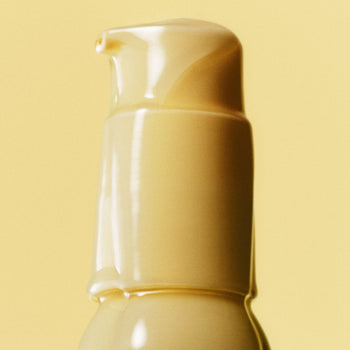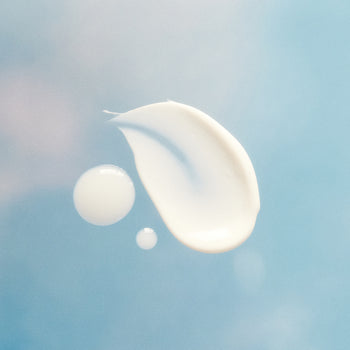
The Yuka App Is Not Science, It’s Marketing.
If there’s one thing everyone wants, it’s safe products. No one’s actively trying to rub something toxic all over their face. From a brand perspective, harming your customers isn’t just unethical, it’s a bad business model. Particularly in the U.S., where healthcare is exorbitantly expensive.
Somehow, over the last few decades, the conversation around “safety” has gotten messy. Public trust in science hasn’t rebounded to pre-2020 levels, and apps like Yuka and EWG have stepped in to fill the void. These platforms claim to do what the “government won’t”: decode ingredient labels for you and warn you of hidden dangers lurking in your products.
On the surface, it sounds great. Who wouldn’t want a simple barcode scan to tell them whether their eye cream is a secret threat?
The problem? These apps aren’t built or vetted by teams of scientists. To understand if something is dangerous, dosage and mode of exposure need to be considered, which these platforms don’t do. On top of that, they often use outdated, cherry-picked, or misinterpreted studies to scare people into buying “clean” alternatives—sometimes with affiliate links or subscription fees attached. They are businesses dressed up as public services.
So, let’s unpack what’s going on and why Dieux won’t be bullied into bad faith arguments about our formulas. Standing up for science matters, even when it isn’t profitable.
To help break this down, we spoke with Milan-based toxicologist Mohammed Kanadil. You can follow his excellent work on Instagram and YouTube.
💡A little background on Kanadil: he started out as a medical lab tech and spent two years working with blood and immune tests. From there, he earned his pharmacy degree and received the Pharm.D title. He then completed a master’s in the safety assessment of xenobiotics and biotech products, which is the study of how unfamiliar chemicals behave in the body. This program is what certified him as both a toxicologist and a cosmetic safety assessor.
Kanadil wears two hats. He’s an academic toxicologist and also a cosmetic safety assessor and scientific adviser. He’s the person reviewing formulas to make sure they’re safe.
In short, Kanadil is not only qualified to talk about this—he’s exactly who we should be listening to when it comes to understanding safety.
Let’s get into it.
1. These apps aren’t built by toxicologists.
Whether it’s Yuka or the EWG, neither platform was started by toxicologists. While Ken Cook, the founder of the EWG earned a B.A. in history, B.S. in agriculture and M.S. in soil science, his experience is more in policy advocacy and activism, not safety and toxicology.
While Cook studied science, Yuka was created by a business school grad, a banker, a lawyer, and a computer engineer—not people trained in toxicology, pharmacology, or regulatory science.
Here’s why this matters: science isn’t simple. A marketing team wants to label things good or bad. A scientist wants to know: what’s the dose? How’s it formulated? What’s the exposure? What are the regulatory thresholds? How can I be truthful even if it makes me unpopular (being unpopular is bad for business after-all)?
Kanadil points out that the “barcode-and-beep simplicity is seductive,” but that’s the flaw. Apps like Yuka “rank ingredients in a vacuum, treating the mere potential for harm as proof of danger and ignoring the dose-makes-the-poison rule that underpins modern modern toxicology” explains Kanadil.
Another massive red flag to Kanadil? These apps keep their scoring algorithms hidden. An important process in science is peer review, scientists can’t point out flaws, corrections or give suggestions. As Kanadil points out: “there’s no way to check why a gentle preservative that shows problems only at laboratory megadoses suddenly earns a scarlet warning while a higher‑risk active skates by.” This is damaging, as “it flattens decades of regulatory work… [and] triggers fear rather than understanding” Kanadil explains.
Ultimately, you’re not getting more safe products. You’re getting product suggestions from people who lack understanding.
2. You can’t determine safety without dose.
This is toxicology 101: the dose makes the poison. Water can kill you if you drink too much of it. So can oxygen. So can lavender. Anything can kill you in the right dose. In asking Kanadil if you can assess safety without the dose, he explains that “you’re shooting in the dark.” There is an extremely considered process with toxicology, for example, it’s not “just about what’s in the jar but how much ends up on skin (or in eyes, lungs, etc.) during real‑world use” Kanadil explains. From there he can do the exposure math. Using retinol as an example: “without a figure, it could be a whisper at 0.1 % or a shout at 1 %, and those are two very different risk profiles and regulatory outcomes” Kanadil says. To experts in the field, Kanadil states “the numbers aren’t trivia; they’re the backbone of any credible safety assessment.”
Think of it like this, a shot of vodka is very different for a 300 pound man vs. a 3 month old infant. Another example? Phenoxyethanol. It’s a preservative used in Instant Angel. The Yuka app labels it as red-alert-dangerous. But, when you dig through Yuka’s citations, even they admit it’s safe under 1%. We use it at 0.3125%—well under EU limits, and even under what’s used in baby products. Yuka still gives it a red flag.
We asked Kanadil what he thought, and ultimately, phenoxyethanol can cause harm at high doses. Kanadil explains this is true of any studied chemical, including water and oxygen. Kanadil goes on to note that “the app probably pulled data from studies where the ingredient was used at extremely high concentrations, possibly even pure or nearly pure, or from animal studies designed to test hazard, not real-world safety. These apps often twist that context to support a fear-based narrative.”
3. The science is cherry-picked, outdated, or misrepresented.
Understanding studies is incredibly important, and you need experts to help interpret results (science is a language!). Kanadil explains that Yuka often pulls from high-dose animal studies—the kind designed to simulate worst-case scenarios, not real-world usage. Kanadil explains that these apps completely misrepresent what the studies are for. “Toxicologists purposely use very high doses in animal studies to identify potential hazards—things like organ damage, carcinogenicity, or reproductive effects—not because that’s what would happen at the tiny amounts used in a skincare product” Kanadil further clarifies.
In toxicology, those studies are the starting point—not the conclusion. They’re used to build generous safety margins into regulatory limits. Apps like Yuka remove that context and serve you fear instead.
4. “But, your toxic load increases when you use these products repetitively over time!”
Toxicologists study something called “aggregate exposure.” AKA, if you use something over and over again daily for an extended period of time, what happens? As Kanadil explains, this is something toxicologists take very seriously. Kanadil will look at all the ways you could be exposed to a chemical throughout the day. In Kanadil’s words:
“When people worry about “small amounts adding up,” that’s not wrong—and it’s exactly why we account for it when setting safety limits. The limits used in cosmetics aren’t random; they’re based on real data and already include generous safety margins to cover repeated, long-term use from multiple sources. For example, in the case of propylparaben, the European Scientific Committee on Consumer Safety assessed what would happen if someone used 18 different products a day, all containing the highest allowed concentration. The result? The total exposure was still 12,000 times lower than the dose that caused no effect in animal studies. So yes, we think about build-up—but we also do the math, and the science gives us a pretty big safety cushion.”
Yuka app? Condenses all this work into an unhelpful “bad” rating.
5. What about endocrine disruptors? Shouldn’t we avoid those at all costs?
This is another area where nuance matters. The reality is many things can tinker with our hormones. Drinking coffee on an empty stomach might elevate your cortisol, which is a hormone. Seed cycling, a trend where you eat seeds to “hormone balance” is well-marketed endocrine disruption.
As Kanadil explains, “endocrine disruption gets thrown around a lot, but in practice there’s a big gap between an endocrine‑active substance and a true endocrine disruptor.” For example, eat a spoonful of sugar? your insuline spikes. Lavender? You might see some endocrine receptor action… but, as Kanadil says “that doesn’t make them dangerous.”
What does make an endocrine disruptor dangerous? Kanadil shares that three things must be true:
- Solid mechanistic data showing the ingredient actually binds or blocks a hormone receptor at realistic doses
- Well‑designed animal or epidemiological studies showing that interaction leads to an adverse effect (think reduced fertility or developmental problems)
- Evidence that people using the product would reach the same internal dose seen in those studies.
If all three things are true, according to Kanadil “yes—the ingredient is on a fast track to restriction or an outright ban in the EU, and industry standards in the U.S. usually follow suit… [Toxicologists] only pull the trigger on a ban when the science—not the headlines—says the risk is real.”
These “safety apps?” They focus more on PR than science.
6. Brands need to care more about safety.
When we started Dieux, a large part of our mission was to never resort to fear to sell you products. Fear around aging, fear around “chemicals” (everything is a chemical) and to stand by the ingredients we use even. Brands reformulate removing perfectly safe ingredients from their formulas not because the science says so, but because the PR is unrelenting. It’s easier sometimes to change the formula than educate. Chemical sunscreens are a good example of an ingredient that is incredible for your skin, have decades of safety data, are approved to use in Europe (at differing doses) yet due to the demonization are waning in launches.
When brands think about safety, yes, consider your formulas. But also consider the long term impacts of misinformation. Ultimately, when science isn’t followed anything can be demonized. This means today’s “clean” product is “toxic” tomorrow.
7. If you're worried about irritation or allergy, here's what actually works:
- Read the ingredient list (especially if you have known fragrance sensitivities).
- Patch test new products.
- Talk to your derm, not your algorithm. As Kanadil notes “no app can tell you how you will react,” Mo says. “Patch‑testing beats algorithmic guesswork every time.
TL;DR
- Yuka and EWG aren’t science, they’re powerful marketing tools.
- They ignore dose, formulation, and real-world use.
- Their red-flag ratings are designed to scare you, not educate you.
- Safety isn’t decided by vibes, it’s decided by math and toxicology.
- Dieux chooses science. Always.






